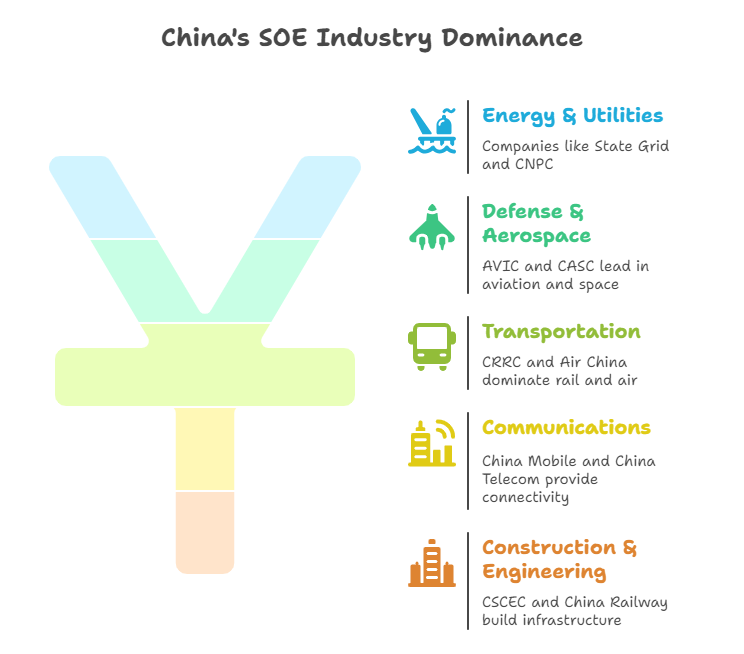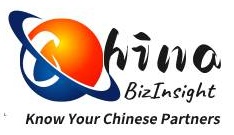If you’re exploring business opportunities in China, you’ve likely come across the term “Central State-Owned Enterprises,” often abbreviated as SOEs. These companies play a monumental role in China’s economy, influencing everything from infrastructure and energy to technology and finance. But what exactly are they? How are they structured, regulated, and why should international businesses care?

In this guide, we’ll take a deep dive into the world of China’s Central SOEs. You’ll learn about their history, their economic impact, the sectors they dominate, and how they’re managed. We’ll also provide you with a current list of these enterprises to support your research, due diligence, or partnership strategies in China.
Understanding China’s Central State-Owned Enterprises
Central State-Owned Enterprises are large corporations owned and controlled by the Chinese government. They are directly supervised by the State-owned Assets Supervision and Administration Commission (SASAC), which ensures they align with national economic strategies and policies.
Unlike private companies, SOEs are often tasked with both commercial and social objectives. They operate in sectors vital to national security and public welfare—such as energy, telecommunications, transportation, and defense—while also competing globally as commercial giants.
A Brief Historical Context
SOEs have been at the heart of China’s economic transformation. After the founding of the People’s Republic of China, most industries were state-controlled. With the economic reforms that began in the late 1970s, China gradually allowed more private and foreign participation in its economy. However, SOEs remained pillars in strategic industries.
In the 1990s, the government restructured many SOEs to make them more efficient, competitive, and profit-oriented. Today, there are about 100 central SOEs—down from thousands decades ago—each a leader in its sector.
The Role of SASAC
The State-owned Assets Supervision and Administration Commission (SASAC) is the key regulatory body. Established in 2003, it manages state assets on behalf of the government, appoints top executives, and oversees mergers, restructuring, and overall performance of central SOEs.
SASAC also promotes innovation and international expansion, encouraging SOEs to participate in global projects like the Belt and Road Initiative.
The Economic Role of SOEs
Central SOEs are backbone contributors to China’s GDP. They employ millions of people, invest heavily in R&D, and often rank among the world’s largest companies by revenue. For example, giants like State Grid, Sinopec, and China National Petroleum frequently appear in the Fortune Global 500.
They are also instrumental in implementing government policies. During the COVID-19 pandemic, many SOEs were tasked with producing medical supplies, building health infrastructure, and stabilizing supply chains.
Key Industries Dominated by SOEs
Central SOEs operate across a wide range of sectors. Here are some of the most prominent:
- Energy & Utilities: Companies like State Grid, China Southern Power Grid, and China National Petroleum Corporation.
- Defense & Aerospace: AVIC (Aviation Industry Corporation of China), China Aerospace Science and Technology Corporation (CASC), and China North Industries Group (Norinco).
- Transportation: CRRC (China Railway Rolling Stock Corporation), China State Railway Group, and major airlines like Air China.
- Communications: China Mobile, China Telecom, and China Unicom.
- Construction & Engineering: China State Construction Engineering Corporation (CSCEC) and China Railway Group.
Many of these enterprises are also expanding overseas, investing in everything from ports and highways in Africa to telecom networks in Southeast Asia.
Why Should International Businesses Understand SOEs?
Whether you’re a investor, a trade partner, or a service provider, understanding SOEs is critical. Here’s why:
- They Are Major Business Partners: SOEs often lead large-scale projects and have significant purchasing power.
- Due Diligence Becomes Essential: When engaging with an SOE, it’s important to verify their legal standing, financial health, and operational history. This is where services like enterprise credit reports can be invaluable.
- Regulatory and Compliance Layers: SOEs may follow different reporting and compliance standards compared to private companies. Being aware of these nuances can help in negotiations and risk management.
- Influence on Market Dynamics: SOEs can shape industry standards, pricing, and competitive landscapes—both in China and abroad.
Challenges and Opportunities

While SOEs offer vast opportunities, they also pose unique challenges:
- Complex Decision-Making: Being government-linked, their decision processes can be slower and involve multiple stakeholders.
- Opacity in Operations: Despite improvements, some SOEs still lack the transparency that international partners may expect.
- Political and Economic Risks: Changes in policy or national strategy can directly affect SOE behavior.
On the bright side, their scale, resources, and stability make them reliable partners for large, long-term projects.
Get the Full List of China’s Central SOEs
To help you in your research, we’ve compiled an up-to-date list of China’s 100 Central State-Owned Enterprises. This list includes their Chinese and English names for easy reference.
🔗 Download the Complete List of China’s Central SOEs (Excel)
We recommend using this list as a starting point for further investigation. If you need deeper insights—such as corporate structure, financial health, or legal records—consider a customized due diligence report.
Final Thoughts
China’s Central State-Owned Enterprises are more than just companies—they are vehicles of national strategy and economic power. For global businesses, understanding how they work is not optional; it’s essential.
At ChinaBizInsight, we specialize in helping international clients access reliable information about Chinese companies. From verifying business licenses to conducting in-depth credit audits, we provide the insights you need to make informed decisions in the complex Chinese market.
Feel free to explore our services or reach out to us for a consultation. We’re here to help you know your Chinese partners.
